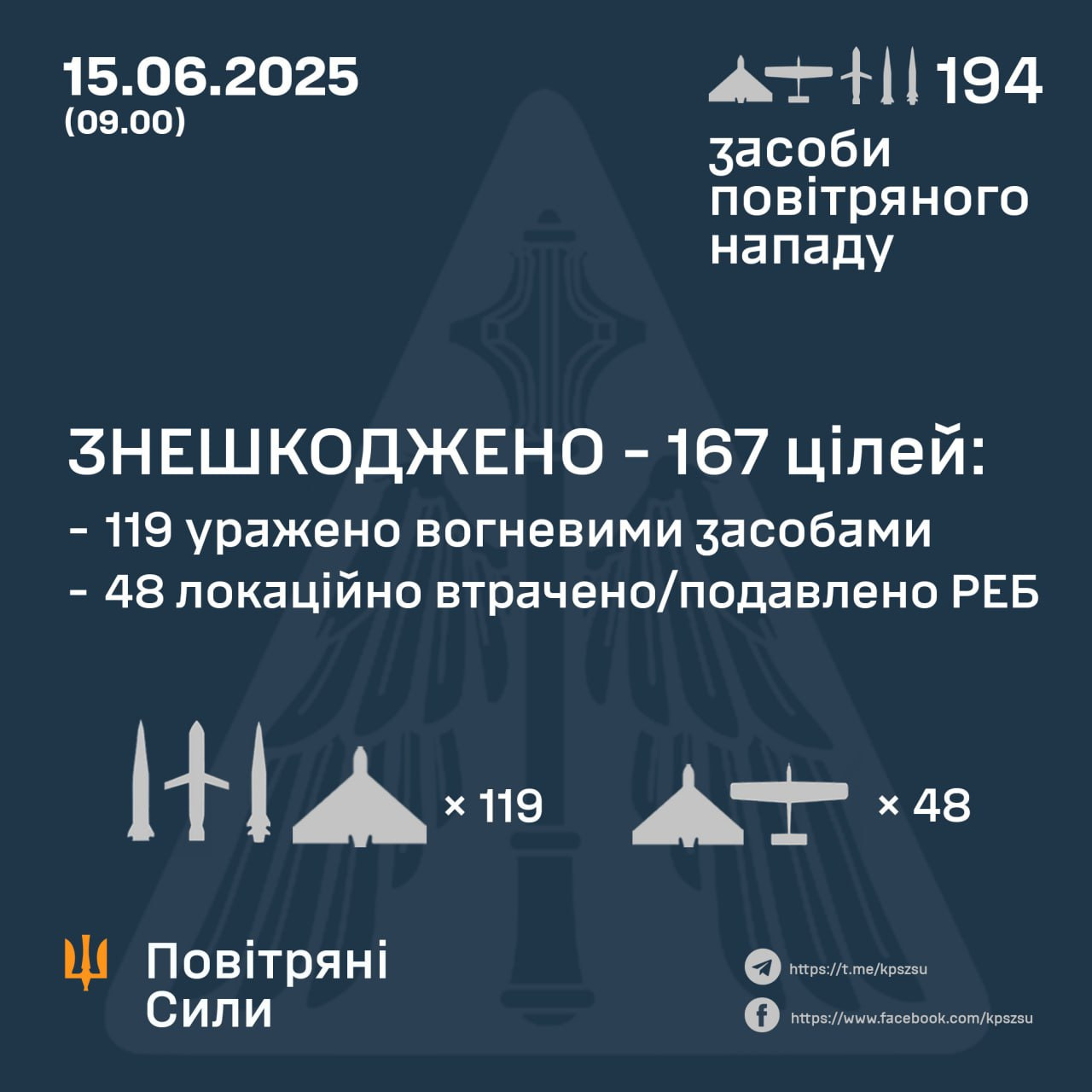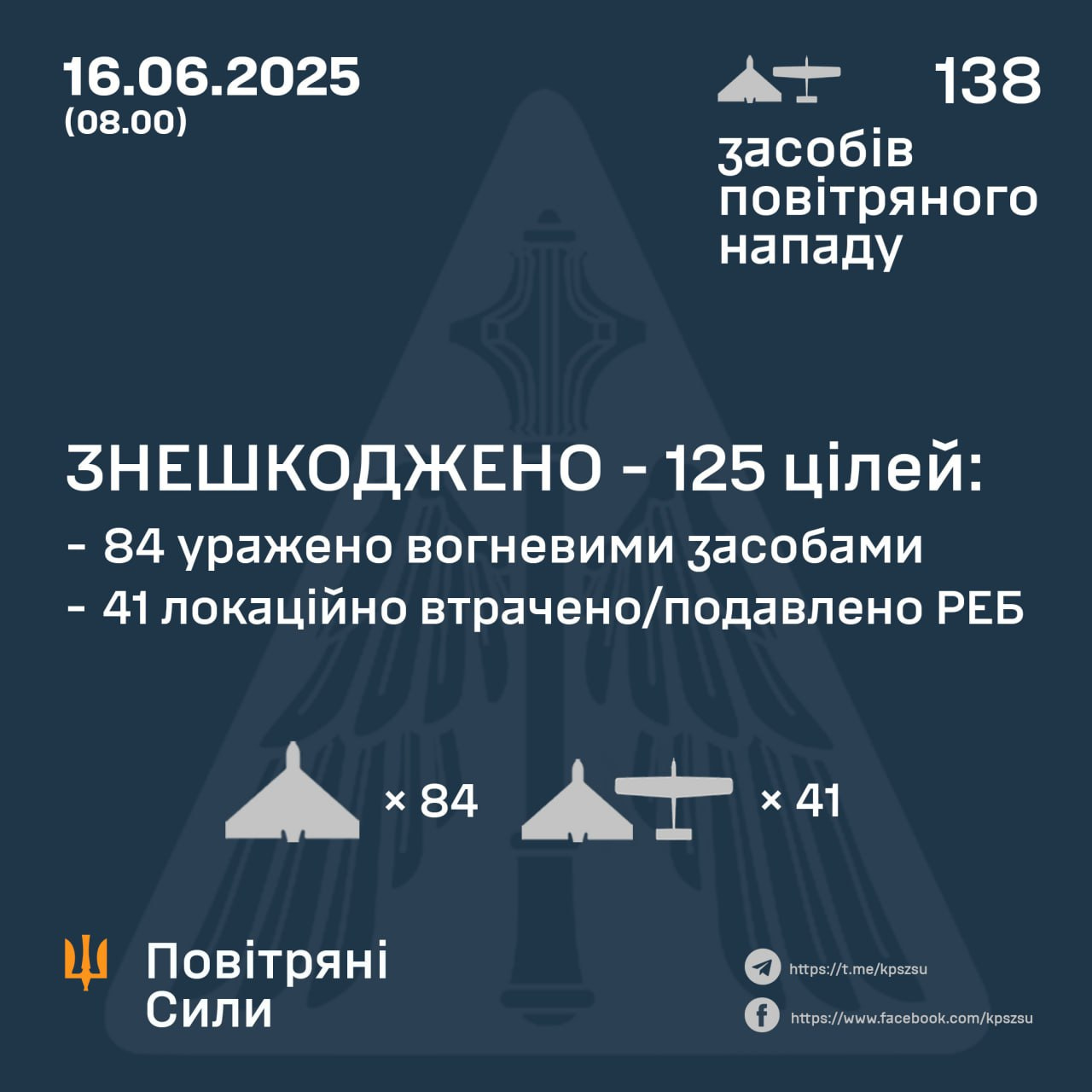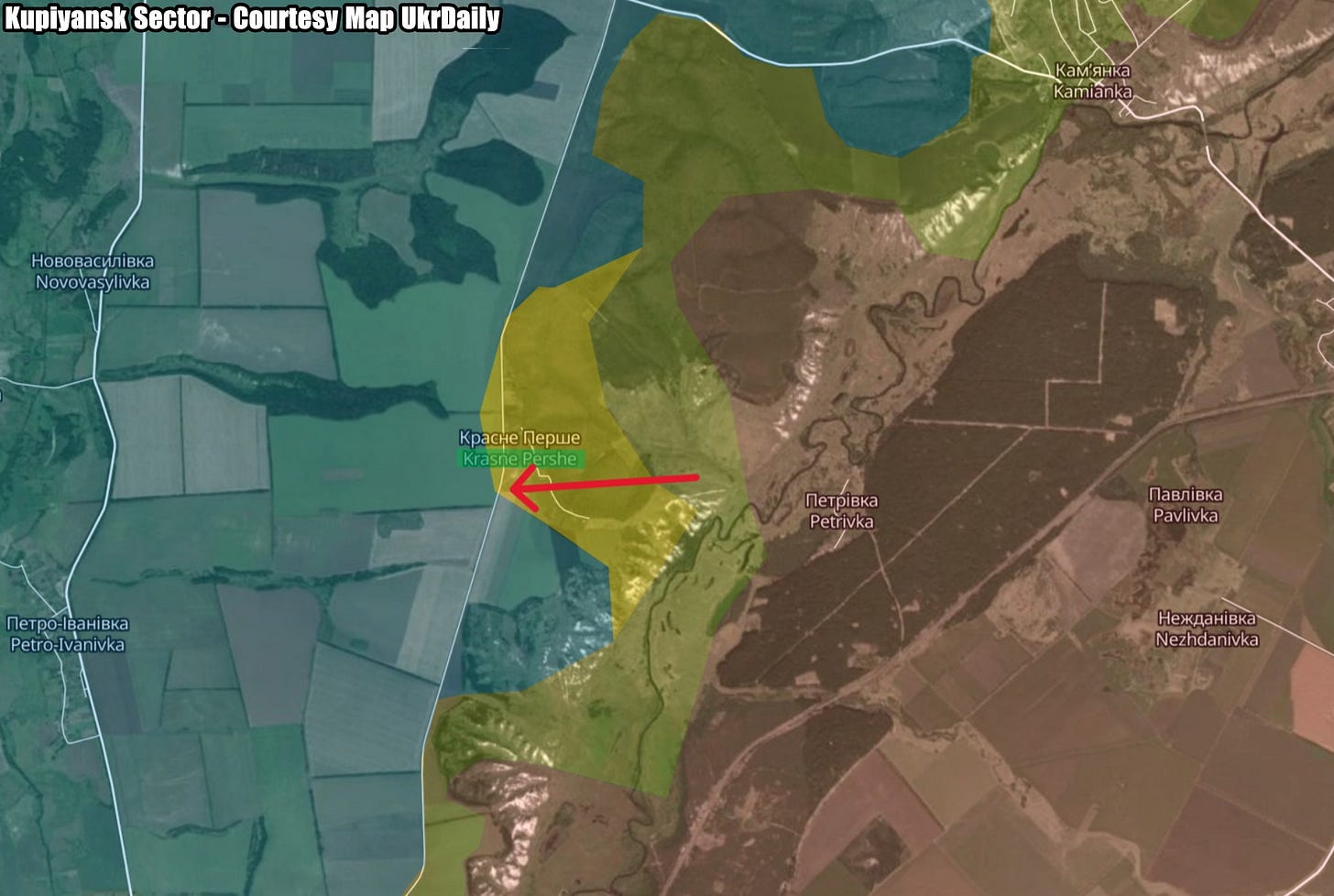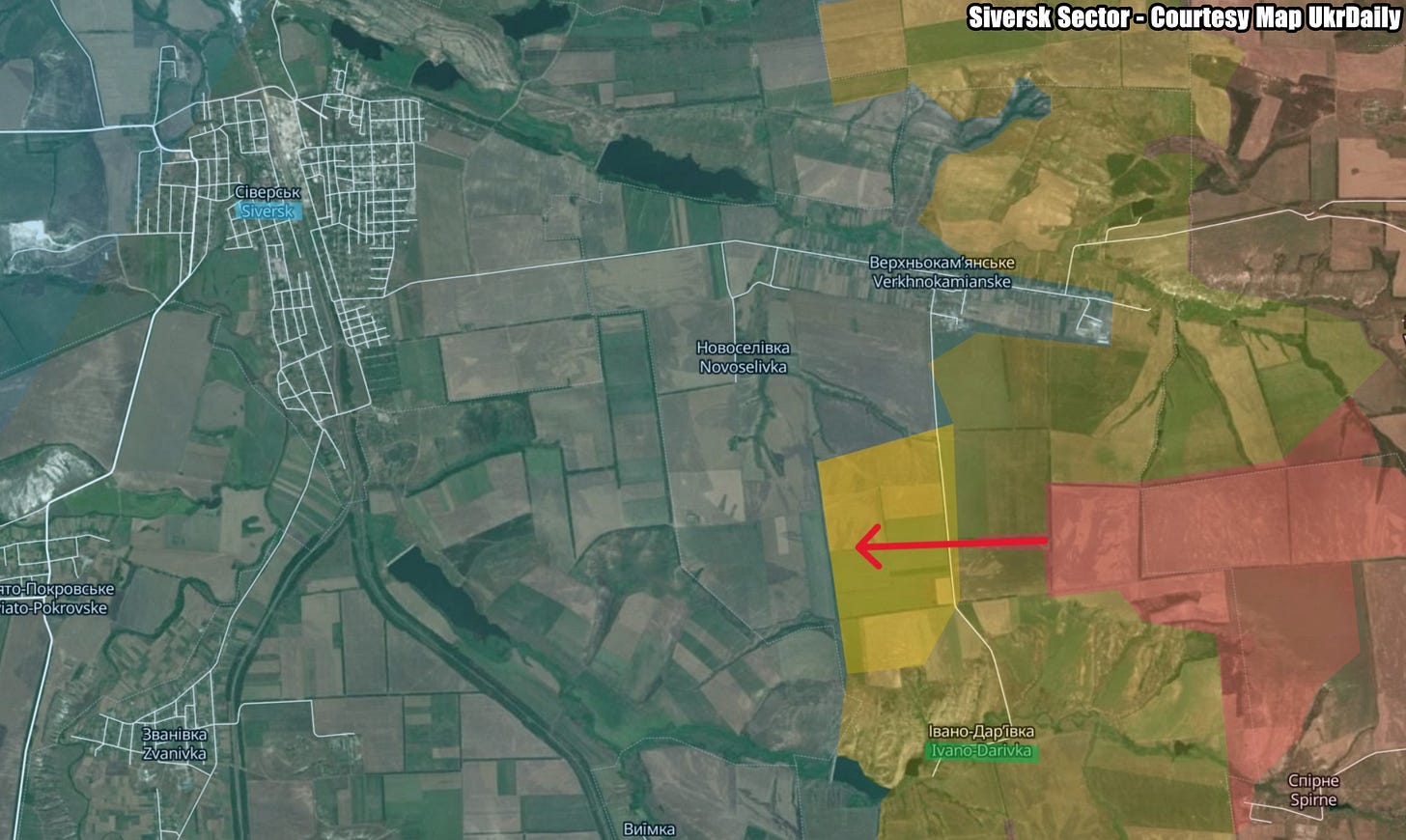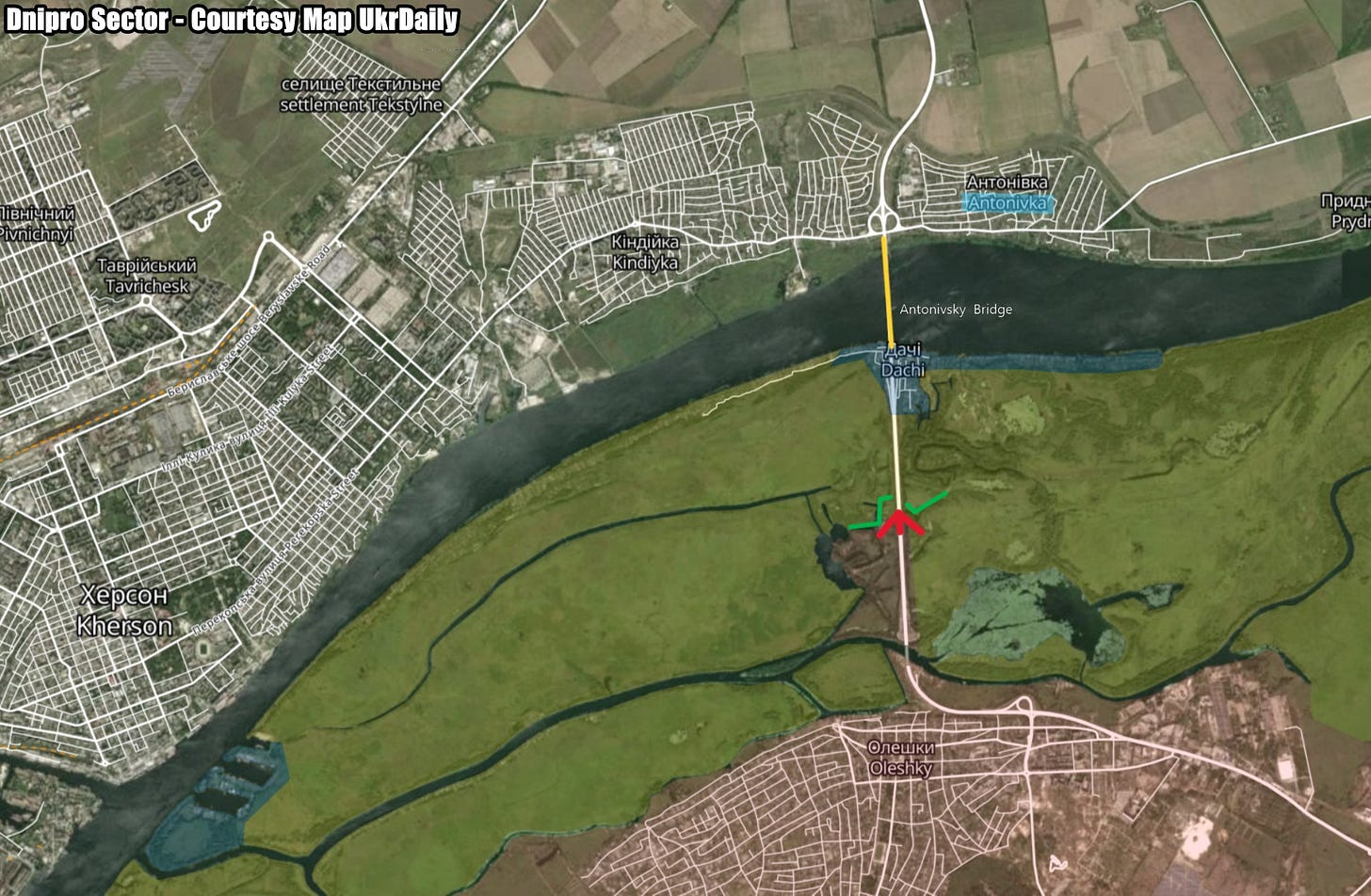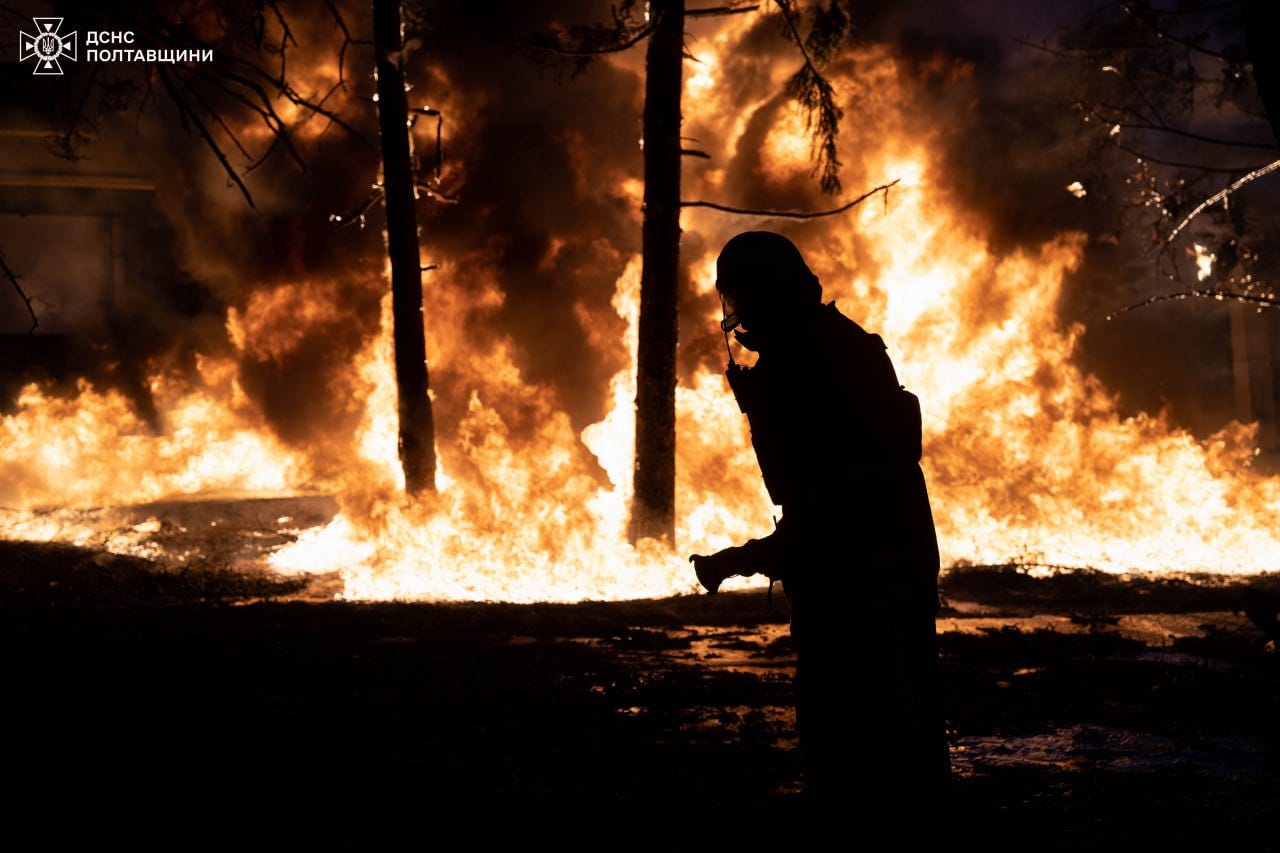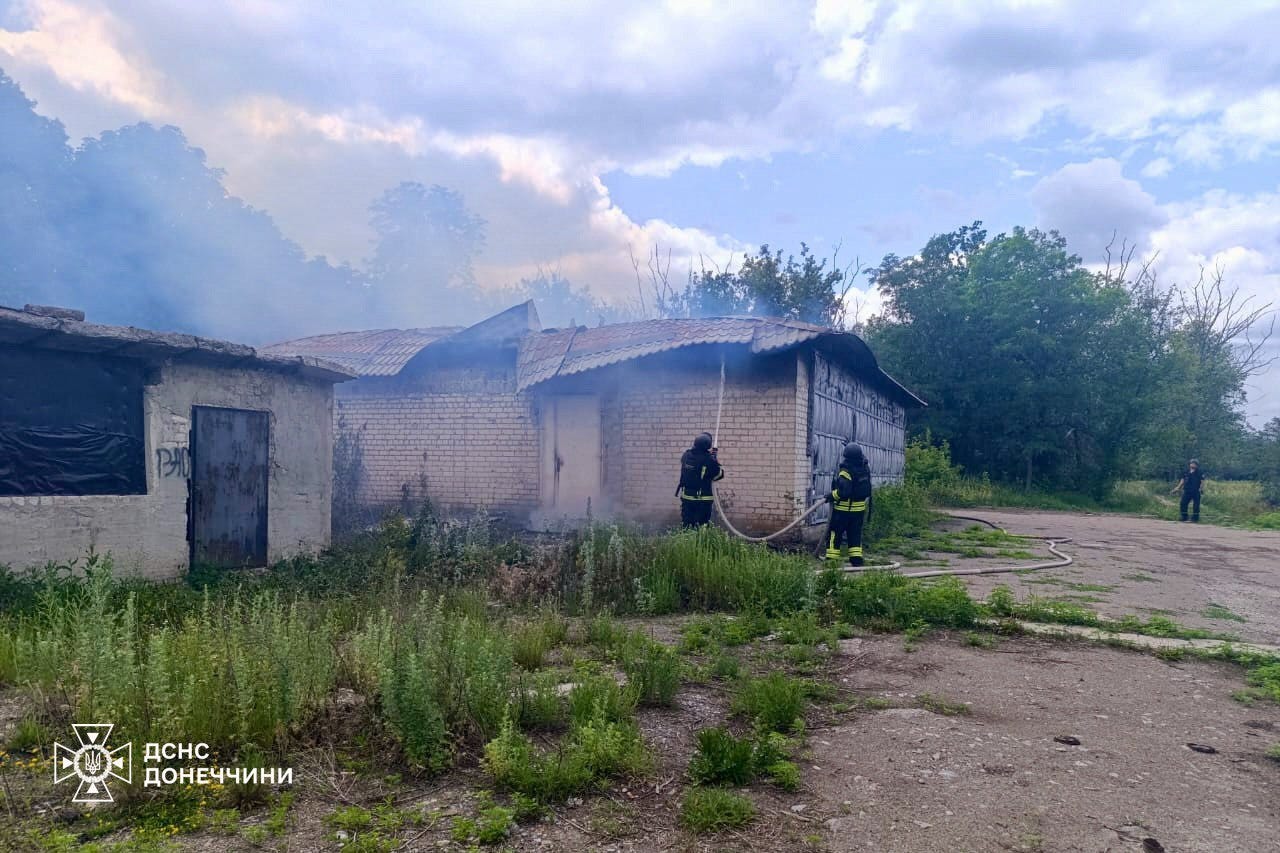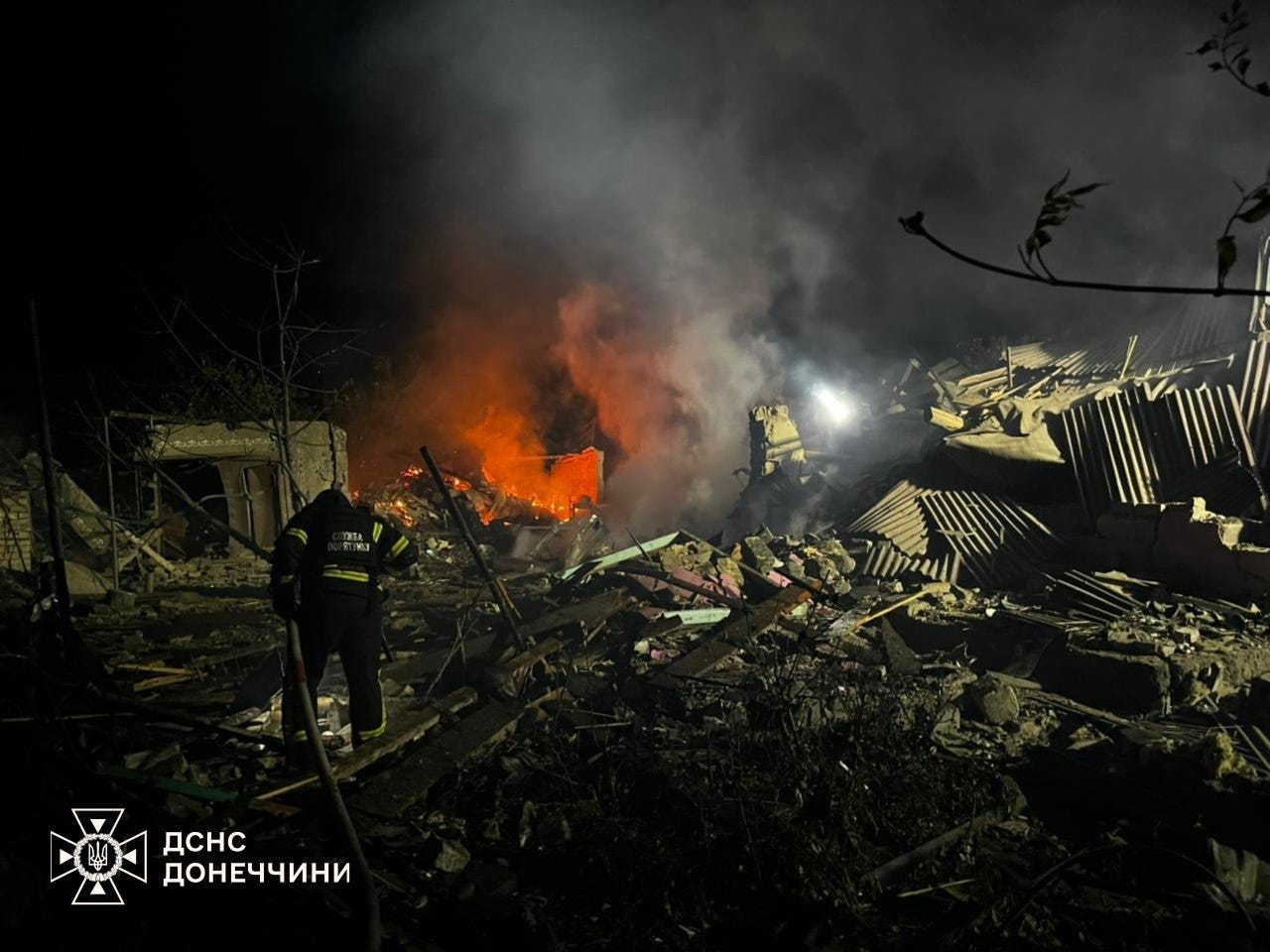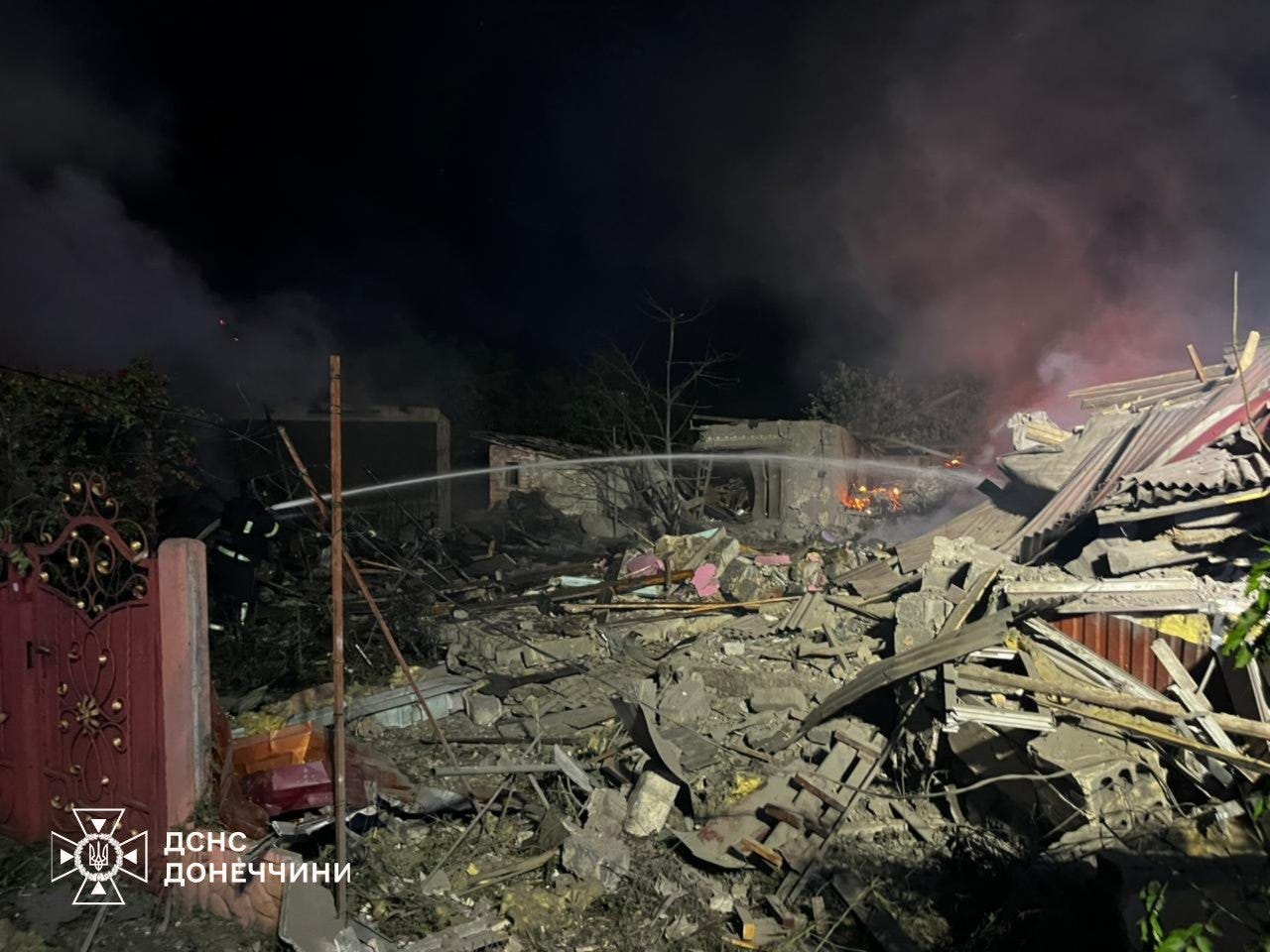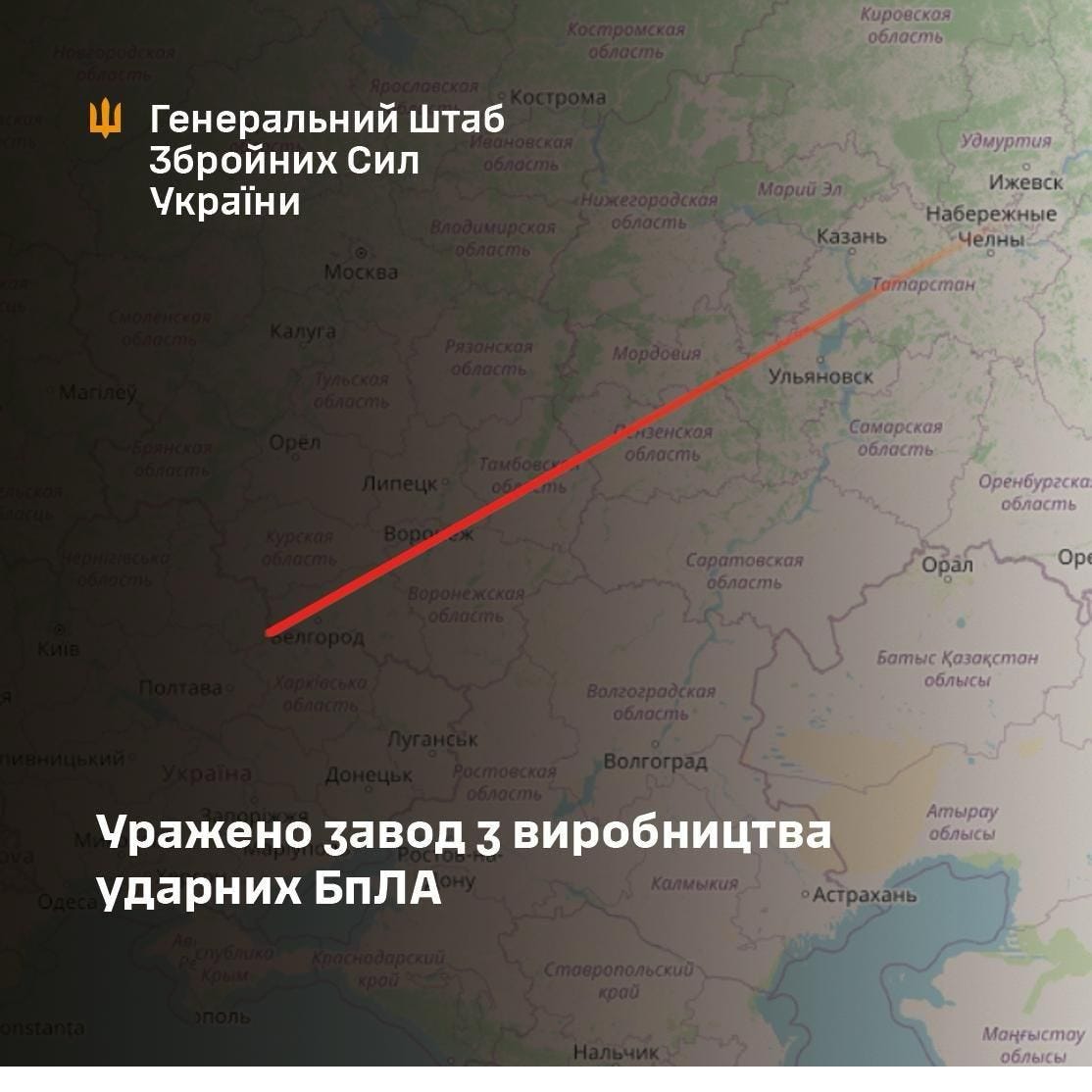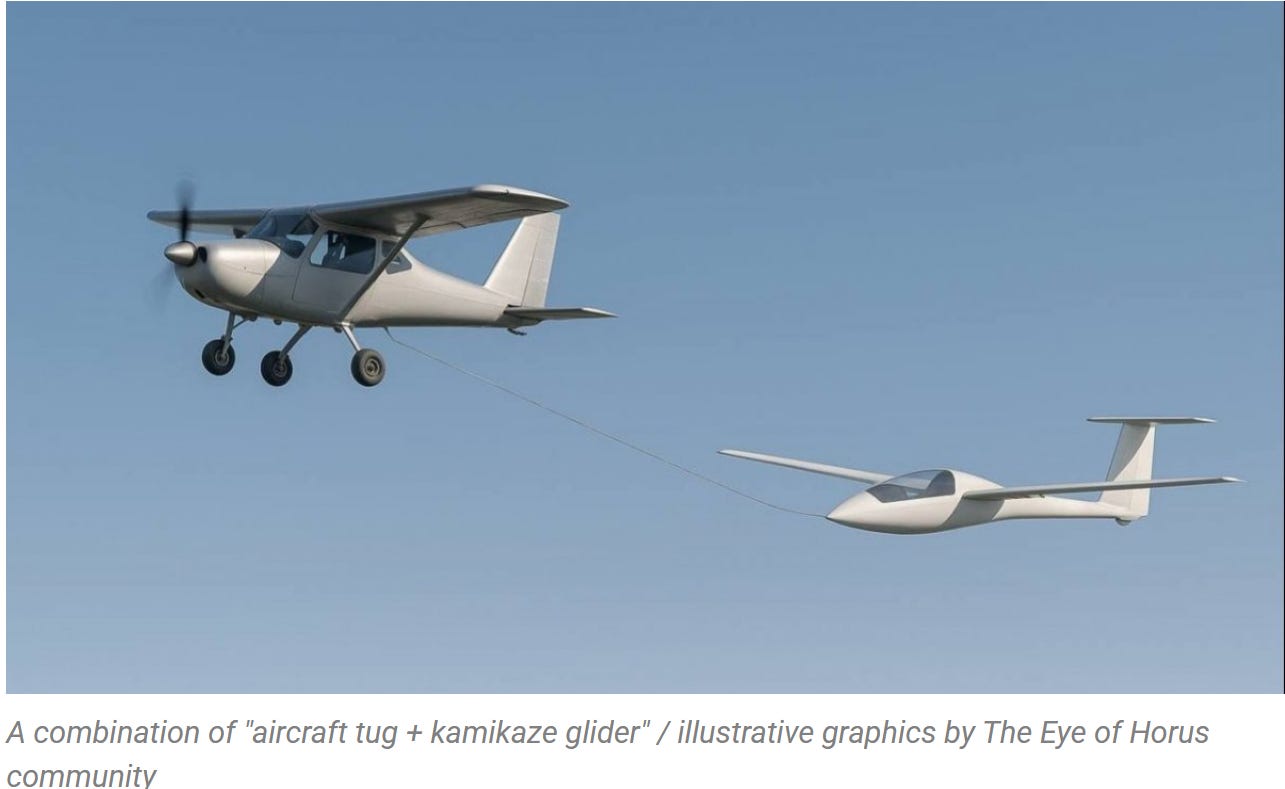Slava Ukraini! In early 2022 I began a Telegram channel aggregating news from a number of sources daily on the war in Ukraine. In June 2023 I began providing a daily draft for the Ukraine War Brief Podcast collecting news from over 70 sources daily, which formed the basis of the script. While the Podcast no longer exists I have continued to make this Brief available for my subscriberss here on Substack and anyone who wishes to keep up with the news from the war.
If you find the Brief informative I would appreciate it if you shared it with others.
All the latest news on the Russo-Ukraine War 6 days per week
ALONG THE CONTACT LINE
GSAFU Morning Report
For: Jun 16, 2025
The General Staff of the Armed Forces of Ukraine in its Operational Information update at 08:00 on Jun 16 stated that day 1209 of the full-scale invasion of the Russian Federation against Ukraine had begun.
The situation on the line of combat remains tense in some sectors. Ukrainian defenders continue to actively counteract the Russian aggressor, causing them significant losses in personnel, equipment and technology. Exhausting the enemy along the entire front line and continuing to disrupt the plans of Russian occupiers to advance deeper into the territory of Ukraine.
Over the past 48 hours, aviation, missile troops and artillery of the Defense Forces have hit 29 areas of concentration of personnel, weapons and military equipment, three control points, two artillery equipment and another important object of Russian invaders.
During the past two days, 378 combat engagements took place.
Over the past 48 hours, the enemy carried out 5 missile strikes, 112 air strikes, used 6,226 attack drones and fired approximately 11,200 artillery shells across the positions of Ukrainian forces and civilians.
Air Force Daily Report
167 ENEMY TARGETS DESTROYED
➖➖➖➖➖➖➖➖➖
On the night of June 15 (from 8:00 p.m. on June 14), the enemy attacked with 194 air attack vehicles:
- 183 Shahed attack UAVs and simulator drones of various types from the following directions: Kursk, Shatalovo, Orel, Bryansk, Millerovo, Primorsko-Akhtarsk – Russia;
- 2 Kh-47M2 Kinzhal aeroballistic missiles from the airspace of the Astrakhan region - Russia;
- 1 Iskander-M/KN-23 ballistic missile from Kursk Oblast – Russia;
- 4 Iskander-K cruise missiles from Rostov Region – Russia;
- 4 "Caliber" cruise missiles from the Black Sea.
The main direction of the attack is Poltava region, the city of Kremenchuk!
The air attack was repelled by aviation, anti-aircraft missile troops, electronic warfare and unmanned systems units, and mobile fire groups of the Defense Forces of Ukraine.
According to preliminary data, as of 9:00 a.m., air defenses neutralized 167 enemy air attack vehicles, 119 were shot down by fire weapons, and 48 were lost in location:
- 111 enemy Shahed UAVs (drones of other types) were shot down by fire, 48 were lost/suppressed by electronic warfare;
- 2 aeroballistic Kh-47M2 "Dagger";
- 3 Iskander-K cruise missiles;
- 3 "Caliber" cruise missiles.
Enemy air attack vehicles were recorded hitting Kremenchuk, Poltava region, and downed aircraft (fragments) fell in 6 locations.
125 ENEMY UAVS DESTROYED
➖➖➖➖➖➖➖➖➖
On the night of June 16 (from 9:00 p.m. on June 15), the enemy attacked with 138 Shahed-type strike UAVs and simulator drones of various types from the directions: Bryansk, Kursk, Orel, Shatalove - Russia.
The main direction of the attack is Donetsk region.
The air attack was repelled by aviation, anti-aircraft missile troops, electronic warfare and unmanned systems units, and mobile fire groups of the Defense Forces of Ukraine.
As of 08:00, air defenses have neutralized 125 enemy Shahed UAVs (and other types of UAVs) in the north, east, south, and center of the country. 84 were shot down by fire weapons, 41 were lost/suppressed by electronic warfare.
Enemy airstrikes were recorded in 10 locations, and the crash sites of downed aircraft (fragments) were recorded in 8 locations.
Combat Operations in the Russian Federation
There has been no significant change in the combat environment in this sector since our last report.
The Khortytsia operational-strategic group
(Responsible for the northeastern part of Ukraine. )
Kupyansk Sector: Russian forces recently advanced in the Kupyansk direction.
Geolocated footage published on Jun 13 indicates that Russian forces recently advanced southwest of Krasne Pershe (north of Kupyansk) and likely seized additional positions on the west (right) bank of the Oskil River.
Siversk Sector: Russian forces recently advanced in the Siversk direction.
Geolocated footage published on June 13 indicates that Russian forces recently advanced north of Ivano-Darivka (southeast of Siversk).
Chasiv Yar Sector: Russian forces recently advanced in Chasiv Yar.
Geolocated footage published on June 12 indicates that Russian forces recently advanced in central Chasiv Yar.
Toretsk Sector: Russian forces recently advanced in the Toretsk direction.
Geolocated footage published on June 14 indicates that Russian forces recently advanced into northern Dyliivka (north of Toretsk).
The Tavria operational-strategic group
(Responsible for the central-eastern and southeastern part of Ukraine.)
There has been no significant change in the combat environment in this sector since our last report.
The Odesa operational-strategic group
(Responsible for Kherson, Qırım, (also known as Crimea) and the Black Sea.)
Dnipro Sector: Russian forces attacked near the Antonivsky railway and roadway bridges in the Kherson direction on Jun 14 and 15 but did not advance.
TEMPORARILY OCCUPIED TERRITORIES
Nothing major to report.
THE HOME FRONT
Russian shelling kills 1 in Kherson, mass attack hits infrastructure in Poltava Oblast.
Russia attacked Ukraine with nearly 200 missiles and drones and shelled residents in Kherson and Donetsk oblasts, killing one and injuring three, the Kyiv Independent reported citing Ukrainian authorities on Jun 15.
Russian forces unleashed drones, artillery, and airstrikes on Kherson Oblast and the city over the last day, killing one person and injuring another, the oblast administration reported. Russian attacks damaged apartments, homes, and gas pipelines, as well as other infrastructure.
In Donetsk Oblast, Russian attacks injured two people in Pokrovsk and Myrnohrad, regional governor Vadym Filashkin reported.
Russia’s combined mass missile and drone strikes largely targeted Kremenchuk in Poltava Oblast. No one was injured or killed, but the attacks hit energy and agricultural facilities, said Poltava governor Volodymyr Kohut.
Drones were also spotted flying through Kyiv and Kyiv Oblast, Chernihiv, Sumy, Dnipropetrovsk, Kirovohrad, Mykolaiv, Zaporizhzhia, and Donetsk oblasts.
Despite talks of peace negotiations, Russia has amped up its drone attacks on Ukraine over the last month.
6 killed, 18 injured in Russian attacks on Ukraine over the past day.
At least six civilians were killed and 18 others wounded in Russian attacks across Ukraine over the past 24 hours, regional authorities reported on Jun 16.
Donetsk Oblast saw the deadliest attacks, with six civilians killed — three in Bagatyr, two in Pokrovsk, and one in Kostyantynivka — and four more injured, Governor Vadym Filashkin said. The region remains one of the most heavily targeted areas amid ongoing Russian offensive operations.
In Kherson Oblast, seven people were injured after Russian forces struck critical infrastructure and residential neighborhoods, damaging eight houses, Governor Oleksandr Prokudin reported.
Three women aged 71, 62, and 27 were wounded in Kupiansk, Kharkiv Oblast, according to Governor Oleh Syniehubov. The oblast has been under intensifying Russian aerial and artillery attacks in recent weeks.
Air defenses were active over Kyiv and surrounding areas, where three people were injured in the capital and region. Authorities said drone fragments fell in residential zones.
In Zaporizhzhia Oblast, a 46-year-old man was injured as Russian troops carried out 426 strikes on 14 settlements, Governor Ivan Fedorov reported.
The latest strikes come as Russia continues to escalate its aerial campaign and reject calls for a ceasefire. Ukrainian officials have repeatedly urged Western partners to bolster air defense capabilities as drone and missile attacks persist.
RUSSIAN WORLD
Ukrainian drones just hit Russian factory making Shahed UAVs—1,000+ km from the front line.
On Sunday, Ukrainian drones targeted the city of Yelabuga in Russia’s Republic of Tatarstan, Euromaidan Press reports citing Russian Telegram channels. The outlet Baza stated that one person was killed and 13 others were injured.
Tatarstan’s regional head, Rustam Minnikhanov, confirmed the attack. He said the deceased was a factory worker, and one of the injured remains in critical condition. Debris from the downed drones reportedly struck a checkpoint building at a local car factory.
Following the impact, a fire broke out near the Aurus and Sollers automotive plant buildings, Mediazona reported. In response, Russia’s civil aviation authority, Rosaviatsiya, temporarily restricted flights at airports in Kazan, Nizhnekamsk, and Izhevsk.
Yelabuga has been hit by drone attacks multiple times in recent months. In April 2024, Ukraine’s Defense Intelligence Directorate claimed responsibility for a strike on the city. In 2025 alone, attacks have occurred in April, May, and June.
The nearby Alabuga Special Economic Zone hosts drone production facilities reportedly involved in strikes against Ukraine. Ukrainian drones have previously targeted the site.
A video of the attack was shared on Telegram, showing smoke billowing over the town, which lies some 1,500 kilometers from Kyiv. There has been no official statement from Kyiv on the alleged strike, and the Kyiv Independent could not independently verify these claims.
So far, Ukrainian military officials have not commented on the latest strike. Yelabuga is located more than 1,000 kilometers from the Ukrainian border.
Ukraine Targets Russian Buturlynovka Airbase in Drone Attack.
A Ukrainian drone strike hit the Russian military airfield near Buturlynovka in the Voronezh region overnight on June 13,the Kyiv Independent reported citing video footage from the Telegram channel Supernova+.
The airbase, located roughly 3 kilometers from the town of Buturlynovka and about 200–250 km from Ukraine’s border, hosts the 899th Guards Assault Aviation Regiment.
The facility is known to house Su-34 fighter-bombers, which have been used in Russian airstrikes on Ukrainian territory.
Footage from local residents shows explosions occurring within the airbase perimeter. Witnesses reported hearing approximately 15 blasts during the nighttime attack.
The airbase was restored for military use in 2014 and became fully operational by 2017.
Today, the facility is used as a base for attack aircraft, in particular Su-34 fighter-bombers, which are actively involved in carrying out air attacks on the territory of Ukraine.
A similar drone attack on Bryansk International Airport was recorded on the night of June 5–6.
That time, Ukrainian drones reportedly struck the airport grounds in the village of Oktyabrske, destroying a Russian Mi-8 helicopter and damaging a Mi-35 helicopter.
Local reports suggest that secondary explosions occurred after the initial strike, possibly indicating the presence of an ammunition depot at the facility.
The Mi-8 was completely destroyed after its munitions detonated, while the Mi-35 sustained partial damage.
Due to the power of the explosions and the secondary detonation recorded by eyewitnesses, it is possible that the Russians had set up an ammunition depot on the airport’s territory.
Over 6,000 North Korean Troops Killed in Russia’s Kursk Region.
The UK Ministry of Defence in their Jun 15 Intelligence Update on Ukraine stated that the Democratic People’s Republic of Korea (DPRK) forces have highly likely sustained more than 6,000 casualties in offensive combat operations against Ukrainian forces in the Russian oblast of Kursk.
The total casualties amount to more than half of the approximately 11,000 DPRK troops initially deployed to the Kursk region. Open-source reports suggest DPRK has subsequently deployed limited numbers of additional troops to Kursk. Significant DPRK casualty rates have almost certainly been sustained primarily through large, highly attritional dismounted assaults.
On 04 June 2025, Russian Security Council Secretary and ex-Defence Minister Sergei Shoigu reportedly visited DPRK for a meeting with DPRK leader Kim Jong Un, his second in less than three months. Shoigu has highly likely been a key interlocutor with DPRK regarding DPRK’s support to Russia’s illegal invasion of Ukraine.
DPRK operations have thus far been confined to the Kursk region. Any decision to deploy into internationally recognised, sovereign Ukrainian territory in support of Russian forces, would almost certainly require sign-off from both Russia’s President Vladimir Putin and Kim Jong Un.
Ukrainian Intelligence Sabotages Power Substation in Kaliningrad, Disrupting Russian Military Industry.
Agents of the Defense Intelligence of Ukraine carried out sabotage in Kaliningrad, Russia, cutting off power to several Russian defense industry facilities. The damage is currently estimated at around $5 million, Defense Express reports.
At around 4 a.m. on June 14, agents of the Defense Intelligence of Ukraine attacked a substation in Kaliningrad, russia. As a result, local facilities associated with the military industry and the Russian armed forces were left without power, according to Suspilne, citing intelligence sources.
According to the source, the agents drained coolant from a power transformer. Subsequently, a fire broke out at the site of the sabotage, causing severe damage to the substation. As a result, several nearby Russian enterprises and military facilities experienced a power outage.
Currently, sources in the Defense Intelligence of Ukraine estimate the damage caused to russia at $5 million.
"We reiterate that Russia no longer has any safe rear areas — not in the east, not in the west, nor anywhere else on the planet. Everything Russian involved in the war against Ukraine will burn, sink, and be destroyed regardless of its level of protection or location," the source stated.
Ukrainian intelligence continues its efforts to weaken Russia's military capabilities, both in occupied Ukrainian territories and within Russia itself.
RELATED INTERNATIONAL NEWS
Russia strikes Boeing offices in Kyiv.
A building used by Boeing in Kyiv was badly damaged in a recent large-scale Russian air attack, in what appeared to be a deliberate strike on the US aerospace company, the Financial Times reported citing six people familiar with the matter and photographs seen by the Financial Times.
The building was among the targets hit on Sunday night in one of the most intense attacks of the war, according to two Boeing employees, three Ukrainian officials and the head of the American Chamber of Commerce in Ukraine (ACC).
Images published online by Ukraine’s state emergency service and verified by the FT showed severe damage to the building and first responders putting out a fire inside.
Boeing is one of the most prominent American businesses present in Ukraine, with its operations largely focused on engineering and technical support. It has a relationship with Ukrainian aircraft maker Antonov, known for producing heavy transport aircraft, including military-capable designs. Boeing executives met with their Antonov counterparts and Ukraine’s defence minister earlier this year to discuss new joint ventures.
The company employed more than 1,000 people across Ukraine and had continued to operate largely unhindered in the country despite more than three years of Russia’s full-scale war, said one of the employees and ACC’s president, Andy Hunder.
Despite the damage to its building in Kyiv, there had been “no operational disruption” as a result of Monday’s attack, Andriy Koryagin, deputy general director of Boeing’s operation in Ukraine, told the FT.
The other Boeing employee said the company had been actively hiring for roles in Ukraine. A job advertisement published on June 2 showed the company was searching for an aircraft interior design and certification engineering manager to join its operations in Kyiv.
The apparent targeting of and the damage incurred to such a high-profile US company on Ukrainian soil could anger President Donald Trump, who has admitted to growing increasingly frustrated by Moscow. In addition to increased aerial strikes, Russia has renewed its ground offensive in eastern Ukraine, as peace talks are stalling due to President Vladimir Putin’s uncompromising position and maximalist demands.
“Russian strikes on American companies in Ukraine are yet another example of Putin’s disregard for US peace efforts,” Ukrainian foreign minister Andriy Sybiha told the FT. “The fact that Russia targets American businesses emphasises the importance of continued US involvement — both in peace efforts and in the security of Ukraine and the rest of Europe.”
The strike could also raise questions about whether Russia is expanding its focus to include western companies with connections to Ukraine’s defence and aviation sectors.
Western officials have warned about an escalating campaign of Russian sabotage and subversion against US and European targets across Europe. Many of those have links to western aid being shipped to Ukraine and to companies producing or shipping weapons and other materiel to the country, according to the Center for Strategic and International Studies (CSIS), a Washington think-tank.
Last year, Boeing and Antonov signed a memorandum of understanding to explore opportunities to collaborate on defence-related projects. That co-operation was discussed further at the Munich Security Conference in February, when Ukrainian defence minister Rustem Umerov met Steve Parker, chief executive, chief operating officer and interim president of Boeing, defence, space and security.
“The central focus of the meeting was co-operation in manufacturing ammunition and aerial strike systems. Special attention was given by the parties to the prospect of jointly producing unmanned aerial systems,” the Ukrainian defence ministry said at the time.
The strike on Boeing’s building also adds to a growing list of Russian attacks on industrial facilities, including repeated strikes on the Antonov plants, power plants and substations, and defence production sites. Ukrainian officials say the attacks are part of Moscow’s effort to degrade the country’s ability to manufacture and repair weapons.
Russia demands Ukraine destroy Western weapons to end war.
Moscow will insist that Ukraine dismantle and destroy all Western-supplied weapons as part of any ceasefire deal, the Kyiv Independent reported citing Russian Deputy Foreign Minister Alexander Grushko in an interview with the state-run newspaper Izvestia published Jun 16.
"All these surpluses must be destroyed. All international algorithms are known. They must be reduced, disposed of, and guaranteed," Grushko said, without offering specifics.
The remarks reflect Moscow's growing list of maximalist demands presented in its so-called "peace memorandum" during recent negotiations with Ukraine in Istanbul on Jun 2.
The document calls for Ukraine to recognize Russia's annexation of Crimea and four partially occupied regions — Kherson, Donetsk, Zaporizhzhia, and Luhansk — and demands full Ukrainian troop withdrawal and demobilization.
Grushko argued that Western weapons aid threatens not only Russia but also Europe, warning that arms could end up on black markets.
"It's crazy how reckless some politicians are, still flooding the market with weapons," he said.
There is no credible evidence that Kyiv has diverted Western weapons or fueled arms trafficking — a narrative promoted by Russian propaganda to undermine support for Kyiv.
Independent oversight by partner states and institutions has consistently found that Ukraine uses Western weapons to defend itself against Russia's full-scale invasion.
Moscow's proposals would further prevent Ukraine from joining NATO or military alliances, prohibit its armed forces' redeployment, and stop all Western military aid and intelligence sharing.
President Volodymyr Zelenskyy has rejected Moscow's demands, saying the Russian delegation admitted in Istanbul that their "memorandum" is an ultimatum Ukraine cannot accept.
"They even told our delegation: we know that our memorandum is an ultimatum, and you will not accept it," he said in a Jun 10 interview with Hungarian outlet Valasz Online.
In contrast, Ukraine's proposal focused on humanitarian measures, including a prisoner exchange, the return of abducted children, and securing the right to join the EU and NATO.
Kyiv has also called for using frozen Russian assets to pay for reconstruction and linking any sanctions relief to a verified ceasefire.
Despite two rounds of talks in May and Jun, no political breakthrough has been reached. Moscow continues to reject calls for an unconditional ceasefire, while Ukraine presses for an end to hostilities.
U.S. President Donald Trump has reportedly shown frustration over Russia's refusal to compromise, yet he has refrained from imposing new sanctions.
Russia evading oil sanctions with illegal transfers near Greece.
An uninsured Russian Aframax-class tanker has been illegally conducting ship-to-ship oil transfers in international waters near Greece and Cyprus since July 2024, Ukraine's military intelligence (HUR) reported on Jun 16.
According to the agency, the vessel, operating without Western insurance, is part of Russia's expanding shadow fleet used to bypass G7 and EU sanctions on Russian oil exports.
HUR said such transfers "pose an environmental threat, allow the aggressor to conceal the origin of oil, evade international control, and ensure its supply to third countries in circumvention of sanctions."
Ukraine has identified the tanker as IMO 9247443 and listed it on the War&Sanctions platform, along with 159 other tankers allegedly belonging to Russia's shadow fleet and 55 captains involved in sanction-busting operations.
Despite price caps and Western restrictions, Russia continues to profit from oil and gas exports, which remain a vital revenue source. According to HUR estimates, roughly one-third of those profits are expected to fund Russia's war against Ukraine in 2025.
In May, the EU approved its 17th sanctions package, targeting nearly 200 shadow fleet vessels. The U.S. Treasury had earlier sanctioned over 180 tankers, which together accounted for nearly half of Russia's offshore oil shipments.
While the Biden administration ramped up pressure on Russia's oil trade early in 2024, U.S. President Donald Trump has since declined to impose new sanctions, despite Moscow's continued refusal to agree to a ceasefire.
MILITARY & TECH
Ukraine’s new deadly combo: A-22 Aircraft, towing Kamikaze Glider in strikes Russian facility.
On Sunday, June 15, 2025, the Ukrainian Defense Forces launched a new strike on the so-called "the Alabuga free economic zone" - one of two locations where long-range kamikaze drones of the "Shahed" type, which have the russian name the Geran-2, are produced on the territory of the russian federation.
Initially, the media voiced the assumption that the A-22 aircraft was involved in this strike as an unmanned bomber.
However, later the telegram channel "Colonel of the General Staff" published an analysis, from which it follows that for this strike a connection was used in the composition of the A-22 aircraft and a kamikaze glider with a 100-kilogram warhead, which is confirmed by the published photo (Photo 1).
In particular, this post also states that towing gliders by an aircraft is a typical scheme for their removal to the echelon, where after undocking they make an independent flight due to air currents (Photo 2). The glider does not have an engine, so after undocking in the area of the target it immediately heads towards it. At the same time, a glider without a pilot allows to carry a combat load of up to 100 kg.
"Thanks to the use of such a scheme, you can hit two objects at once at a great distance from the line of combat contact with a relatively large equivalent of explosives," this post also says.
The Defense Express analysis shows that until now, the use of the "drone-kamikaze as a tug + glider-kamikaze as an additional combat unit" scheme has not been recorded in the world. There is also currently no other evidence of the use of a glider as an unpowered kamikaze aircraft.
During the Second World War, when the Allies used landing gliders towed by C-47 transport aircraft to open a second front in Europe during large-scale landing operations.
It is an interesting and open question how large-scale and effective the described scheme of drone attacks on military facilities in the territory of the russian federation can be. To understand the possible consequences of such use, we can start from the assessments of the Dnipro OSINT community, which indicate that as a result of the Ukrainian drones hitting the Alabuga, two workers were killed as well as 14 were injured, among those involved in the production process in this production area.
That’s it for today’s Brief folks if you would like to keep up with events in Ukraine daily please consider subscribing, it’s free!









